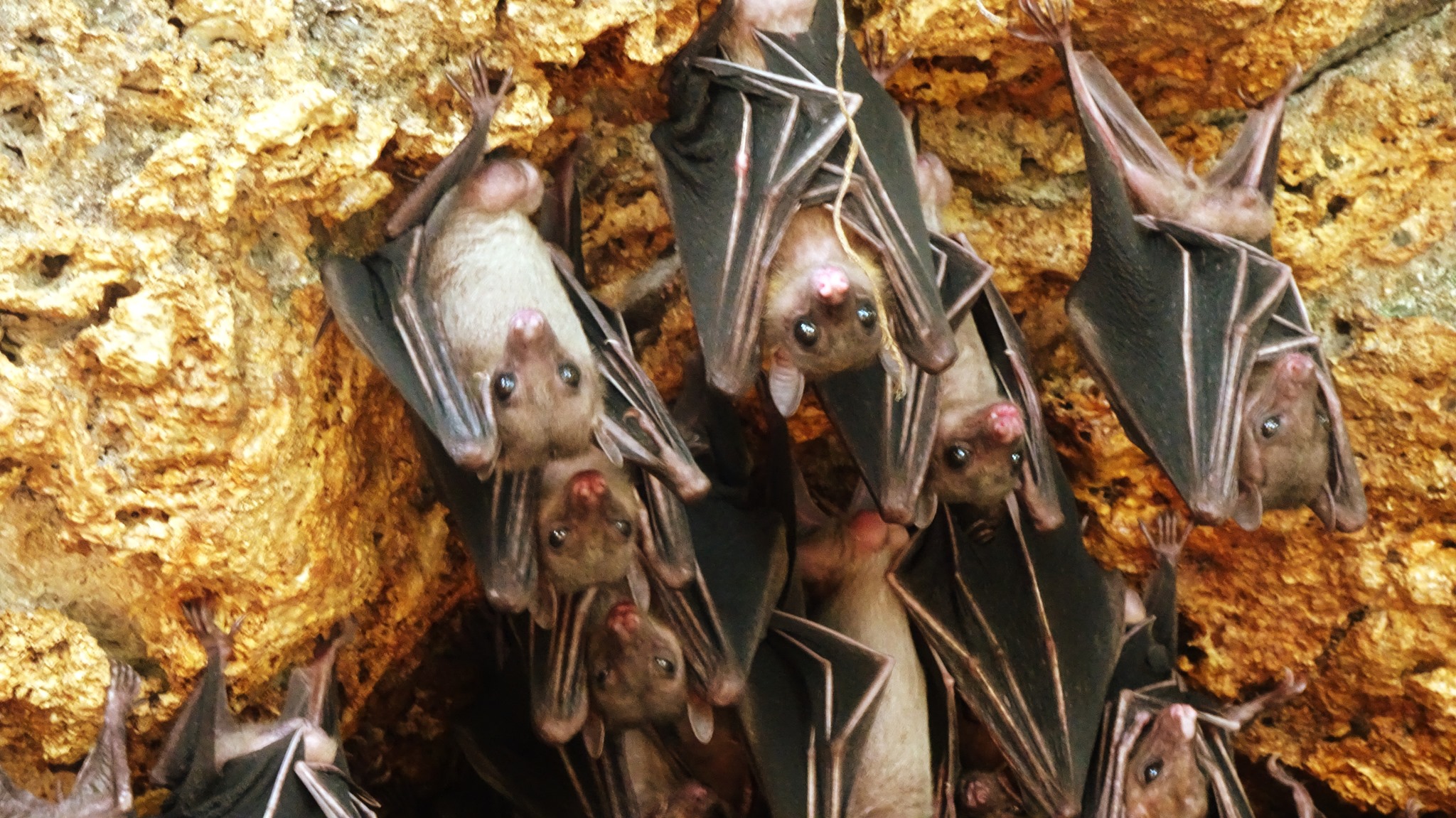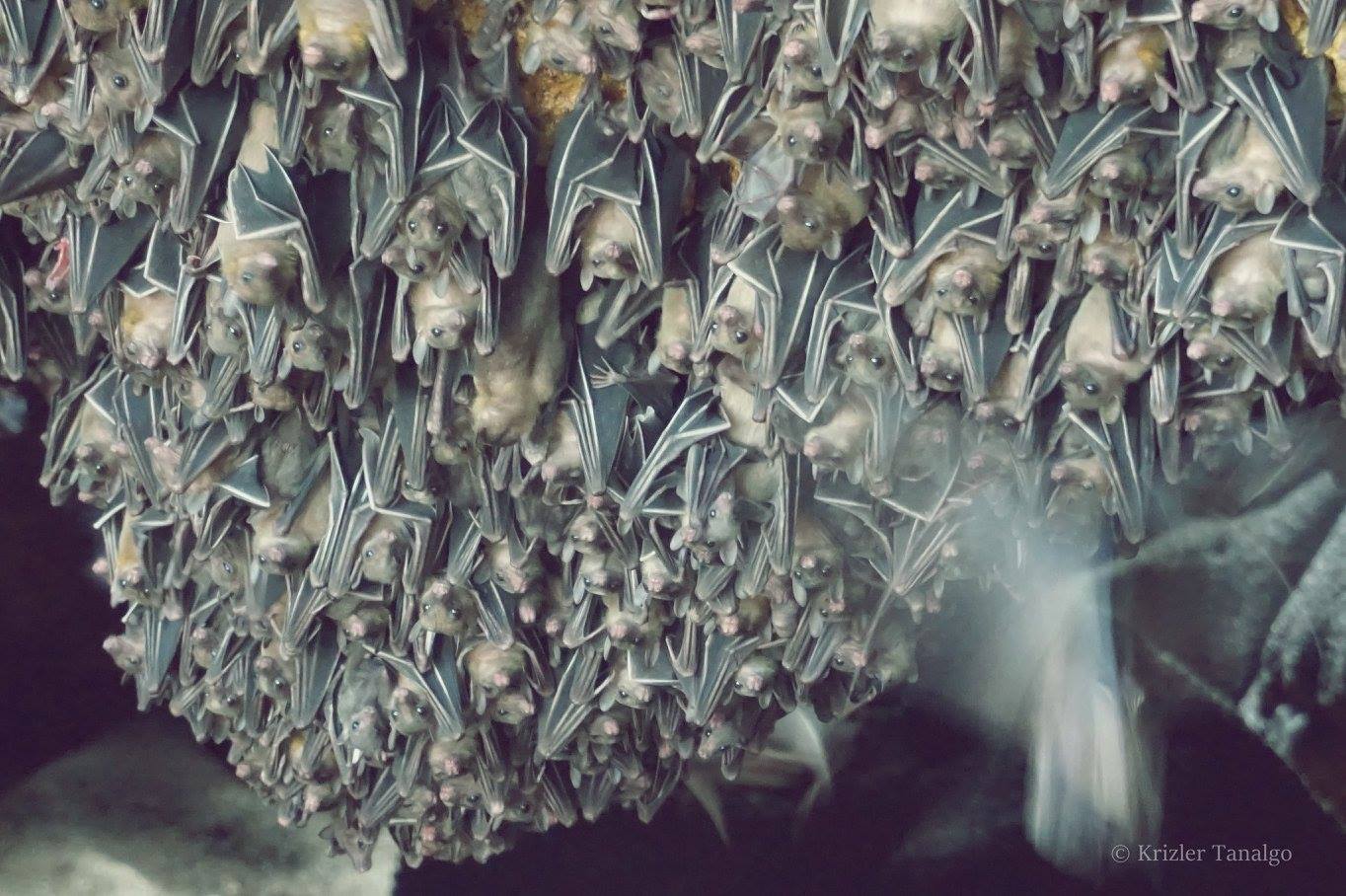The Malaysian flying fox, one of the world’s largest bat species, boasts a wingspan of nearly 5 feet and an ominous taxonomic name: Pteropus vampyrus.
But despite its bloodthirsty moniker and imposing appearance, the flying fox isn’t a threat, let alone a vampire. As a frugivore it only eats fruit, flowers and nectar. And as it feeds and travels, the bat helps pollinate trees and spread seeds throughout the forest. The famously pricey durian fruit, an Asian delicacy, depends in part on the bats’ role in the ecosystem.
That doesn’t stop people from killing them, though. Last year the IUCN Red List, which assesses the extinction risk of species around the world, listed the Malaysian flying fox as endangered due to habitat loss and “intensive and unsustainable hunting pressure across its range.”
It’s not alone. According to a new study, hunting poses a little-recognized threat to at least 19% of the world’s 1,400 bat species. Many of these bats are hunted for food, while others face persecution as “pest” species that eat agricultural crops. Some die simply due to negative cultural perceptions.
The study’s authors have seen the scope of the problem firsthand.
“In some areas of the Southern Philippines where I live, I have witnessed fruit bats being harvested in a massive number from caves or trees where they roost,” says Krizler Cejuela Tanalgo, a biologist with the University of Southern Mindanao. And Alice C. Hughes, a biologist with the University of Hong Kong, says she’s seen signs of hunting at “one-third to half of the caves I have surveyed in Asia.”

Other researchers have published warnings about bat hunting, but this new paper finds that the problem is significantly worse than previously thought. Hunting could even contribute to many species’ extinction, the authors warn.
Species at highest risk include large-bodied bats like flying foxes, bats in tropical locations, and those with limited distribution, like bats who evolved on islands. Hunting is also particularly bad for bats already suffering declines due to deforestation, agriculture, climate change and extreme weather events.
Economics matter, too. Hunting poses a greater threat in countries where subsistence hunting is the norm or nations that lack resources to protect forests or national parks or enforce endangered-species regulations.
But the greatest threat hunting poses to bats is that we’re simply not talking about it as much as we talk about other heavily hunted species like wolves, rhinos, pangolins and ducks.
In fact, the problem has gone mostly overlooked in conservation circles, say the authors.
“Most conservation prioritization is too focused on species that are perceived as charismatic, such as megafauna,” says Tanalgo. “Bats are often neglected and feared species because they are often associated with negative perceptions and beliefs, and the global Covid-19 pandemic has exacerbated this.”
That’s why they conducted the study — “to highlight the conservation status and needs of bats so we can attract the attention of policymakers and effectively conserve them,” he says.

So what do we do to keep bats flying?
One answer is communicating their value. “Bats are amazing animals that fulfil many important services, from pollination to pest control,” says Hughes. “Reducing hunting maintains those services.”
She also suggests education campaigns to inform people about the risk of eating bats in regions where the animals may carry pathogens or parasites. “Eating and hunting bats includes a risk of spillover, so highlighting this across all sectors is critical,” Hughes says.
Bats also need more research to further identify which species are at risk from hunting. “In global analyses of bushmeat and hunting, the hunting of bats is frequently overlooked,” Hughes says. “Understanding the dimensions of trade is critical.”
But most of all, they need simply to be seen and safeguarded, something the authors say their study aims to help correct. “We hope that bats will receive more attention when it comes to conservation prioritization and protection,” Tanalgo says.
That starts with updating more IUCN Red List entries to reflect hunting risks. The Malaysian flying fox is a good start: The paper suggests the species should have been listed as endangered “decades” ago, when there was more time to address the hunting threat.
Tanalgo says uncontrolled hunting could be causing other species currently perceived as “common” — and are therefore unprotected — to decline while no one is watching.
“This can lead to ‘passenger-pigeon fiasco effects,’ where a common and abundant species may become extinct as a result of continuous human activities,” he warns. And as bats decline and disappear, a lot of other species — including humans — could suffer.
Previously in The Revelator:
Speak Up for Bats — Even in the Pandemic
![]()


